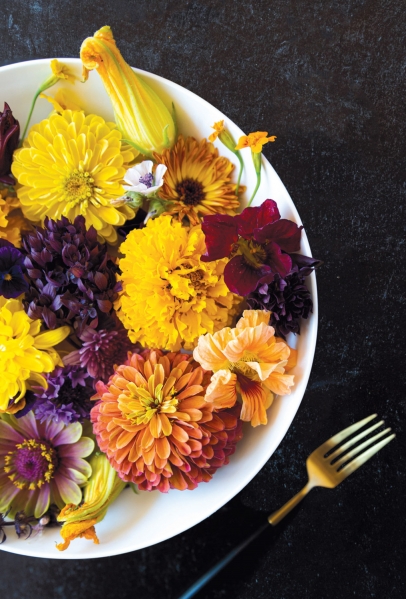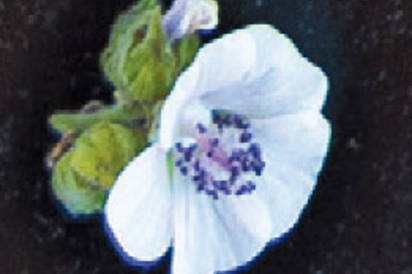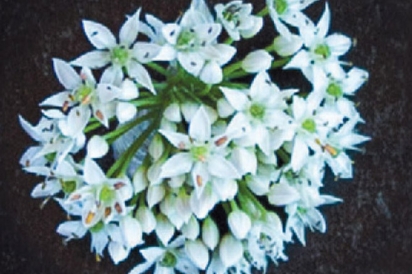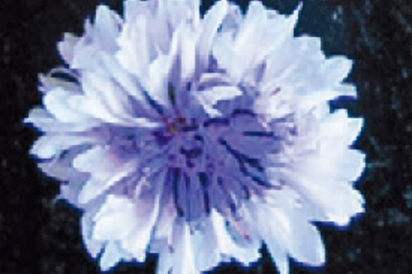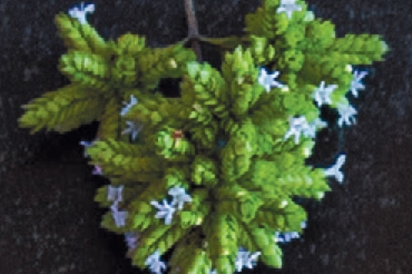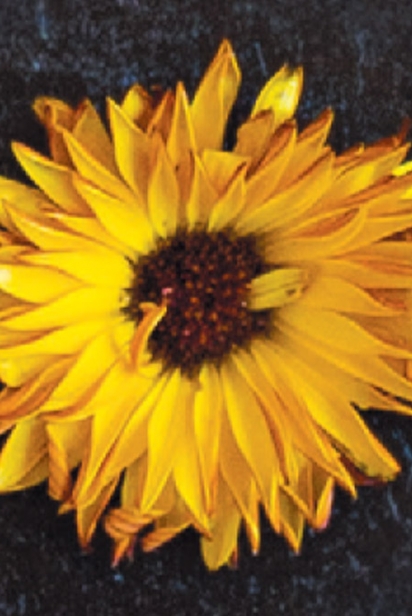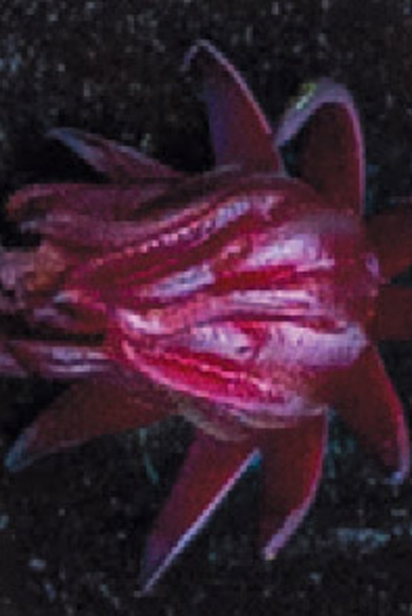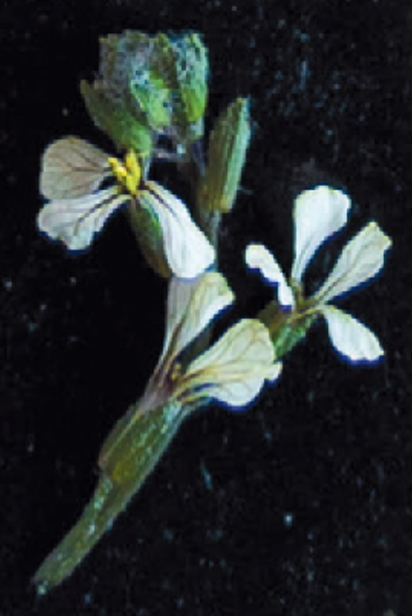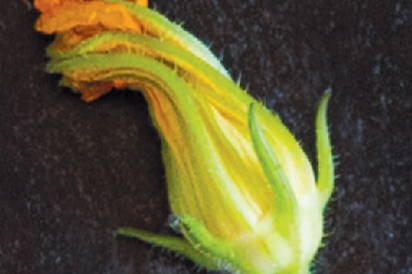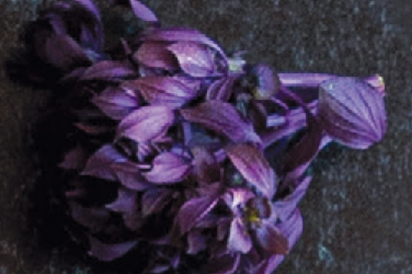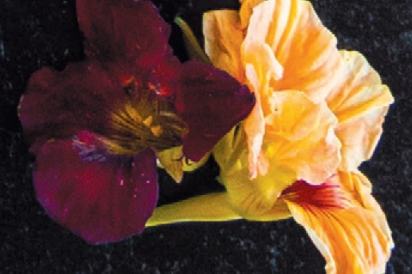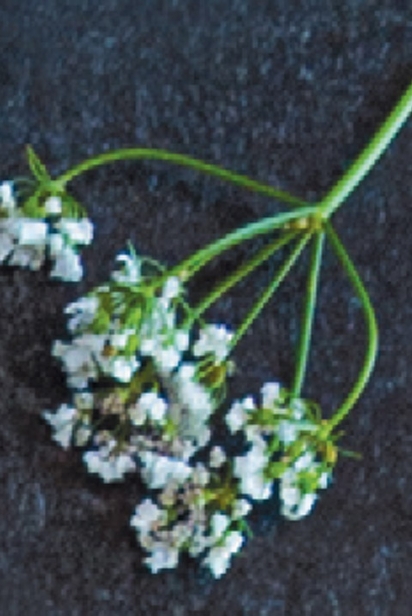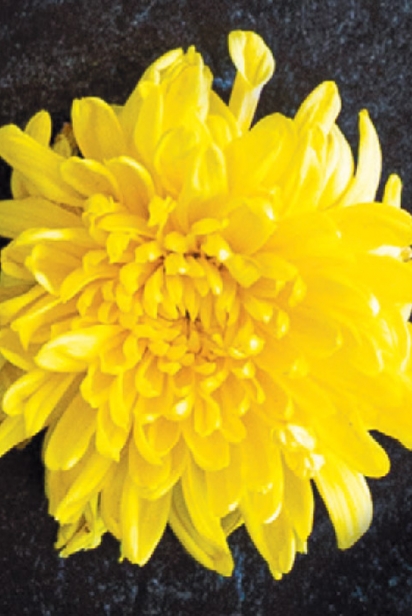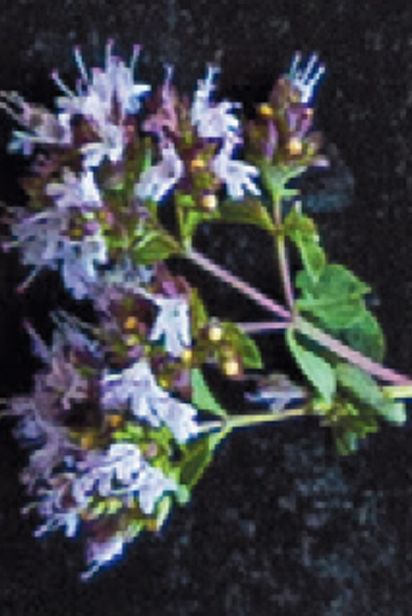Edible Flowers of Fall
While spring and summer are traditionally flower seasons, in Southern California we can see flowers in our Garden for month into fall and winter, Flowers are often recognized and lauded for their benefits to pollinators and for pest deterrence, But did it know that many flowers also have health benefits when consumed? Here, former restaurateur Mark Donofrio, who currently farms flowers and produce at the Starter Farm in Santa Ynez, shares some common fall flowers that can make a tasty addition to your plate.
MARSHMALLOW
Long considered a weed by westerners, marshmallow is actually a medicinal plant that is entirely edible. The slightly sweet root is eaten as a digestive support, and was the impetus of the modern fluffy treat (which is now made without this plate). Use the mild-flavored leaves in salads and as thickeners for soups (similar to okra) and the flowers in salads or dried for tea.
GARLIC CHIVES
Slightly wider and flatter than chive have a gentle garlicky flavor, and are often used for garnishes in soups and salads, The tiny white flowers carry a stronger flavor than the leaves and can be stir fried, chopped as a garnish or used to flavor butter, The stalk with unopened flowers bulbs can be cooked up like asparagus. A word of warning though, the longer they are stored off the stalk, the stronger the flavor!
BACHELOR’S BUTTONS
These gorgeous cornflowers, also called bachelor’s buttons, are most, commonly used as a garnish in fresh salads. They have a slightly clove-like smell and flavor, with just a hint of sweet spicy. They Spruce up the look of any bouquet and can also be used as a natural food dye!
OREGANO
Herbs in the garden are great for flavoring dishes year round, but most often we snip off the flowers to give the herbs longer life. In fall, we allow some of our herbs and flowers to bring in the beneficial bugs. But we can share the bounty. Oregano flowers can be used just like the leaves but have a milder flavor profile.
MARIGOLD
Marigold is a great cut flower, but at the starter Farm we also plate these beauties to ward off harmful pests and the occasional rabbit (they don’t like the smell). Dried marigold flower are added to our chicken feed to bring out that rich golden color in the yolks that screams healthy, But our favorite use is making ice cubes with the petals, Guests think we are fancy and it brightness that glass of cold sun tea!
CALENDULA
Some chefs use calendula flowers to color rice instead of using the more expensive saffron. It is reported that calendula has anti-inflammatory properties when used in creams. We just love the pop of color it adds to a great Spanish paella and swear we get a subtle honey flavor from the petals. Just add the petals to any dish!
HIBISCUS
Iced hibiscus tea is a staple during our workday. You actually use the dried calyx (the protective layer around the flower) to brew this bright red delicious caffeine-free hydrating tea. First, we boil water with sliced ginger, add dried hibiscus take off the heat and let the tea steep for a few hours. Strain the tea into a large pitcher, add a couple of cups of water and the juice from two limes. You can flavor the tea with other fruits as well! Some studies have shown that hibiscus tea may help lower blood pressure. After the workday, we think it makes a great addition to our margaritas!
ARUGULA
Sure, we all love an arugula salad but, much like chive blossoms, the real flavor punch is in the flower. Don’t pull out those bolting plants too soon and you will be rewarded with pretty and tasty flowers. Forget the pepper in that Cacio y Pepe pasta: Add spicy arugula flowers instead!
SQUASH BLOSSOM
Ah, the squash blossom, zucchini flowers get all the love but did you know that winter squash and pumpkin flowers produce much larger flowers? We love their size for extra-large fried squash blooms, stuff with a ricotta cheese mixture, batter with an egg and flour combo and fry lightly and good EVOO. Server over a rich tomato sauce, sprinkle with a touch of salt and dinner is served. We also love to top our pizzas with their beautiful blooms.
BASIL
We all know about basil leaves for flavoring tomato sauce and making pesto but did you the flowers add an anise flavor pop to just about any dish? Go ahead and roast those Late-season cherry tomatoes with onions and garlic for that wonderful fall-season pasta, Sprinkle the flowers and some great salty pecorino to finish that warming bowl of rigatoni!
PANSIES AND VIOLAS
Pansies and violas are perfect for dressing up fall kale salads, decorating cakes or finishing some local halibut dish from the ventura docks. Coming in a range of colors, pansies are a rich source of potent plant compounds known to have antioxidant and anti-inflammatory properties.
NASTURTIUM
Both the leaves and peppery blooms of nasturtiums are the perfect add to a salad of goat cheese, arugula, toasted pistachios and California citrus. Toss in a simple vinaigrette and finish with a drizzle of honey. Nasturtiums contains high levels of vitamin C and are just what the doctor ordered to combat winter colds!
CILANTRO
For these who Love cilantro, it is always a sad day when the plant bolts, But not anymore! You can eat the delicate while blossoms fresh in your salads and stir-fry dishes and know that you are also getting good amounts of vitamins A, C and K. The flowers still have the distinctive cilantro flavor but it is more mild.
CHRYSANTHEMUM
Chrysanthemum is a staple in most fall gardens. We dry out the flowers and then make a refreshing tea to drink on chilly fall nights. The flavor is a bit sweet with touches of herbs and honey. The flavors of different mums vary so make sure you pick one that is tasty and for eating!
MARJORAM
Similar to oregano, marjoram has flowers that are milder in flavor than the leaves and can be used in all the same ways. Both plants also have proven (as in scientific studies) health benefits! Marjoram flowers in particular are anti-inflammatory, antifungal, antibacterial as well as heart and liver protectant. And they are pretty!


